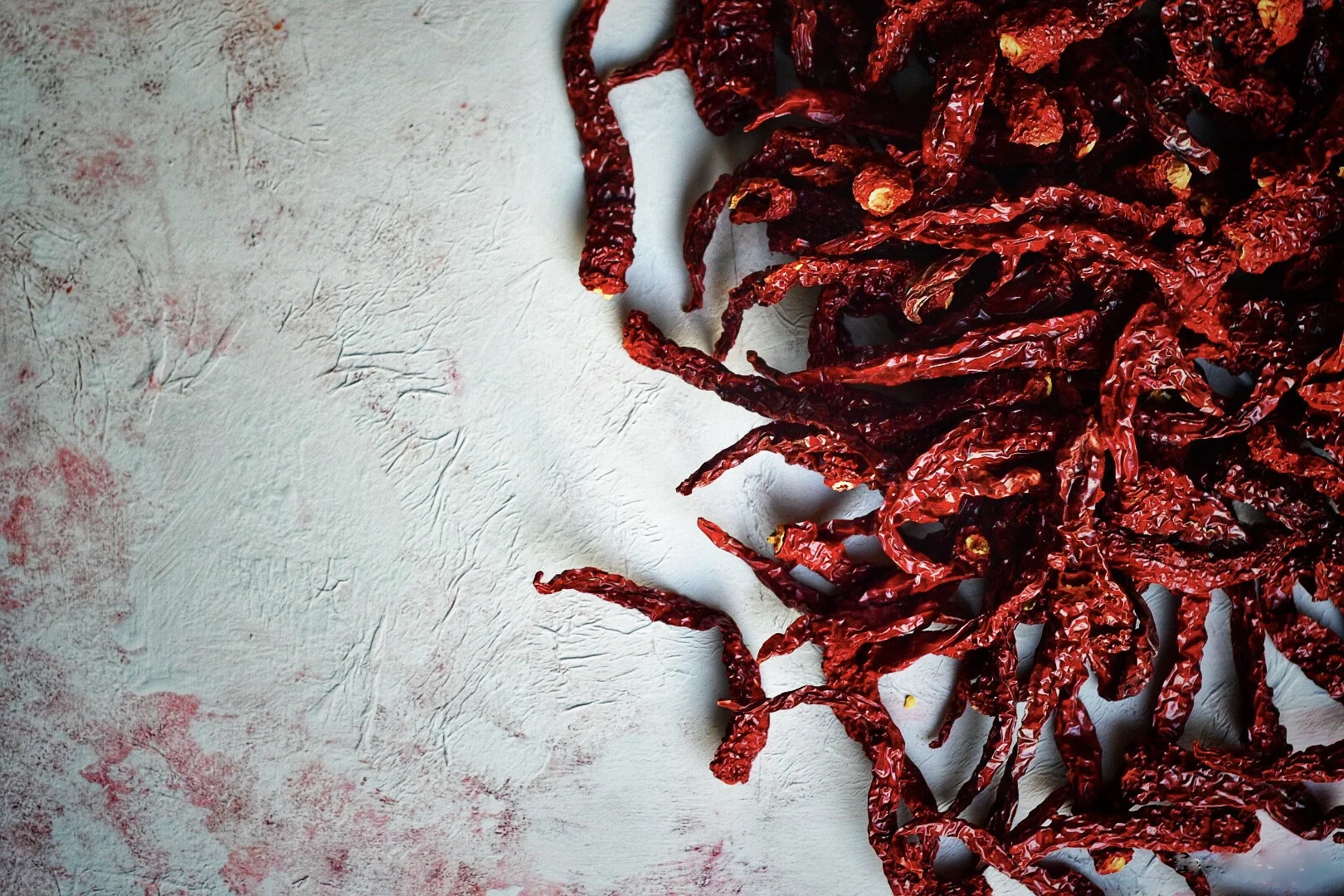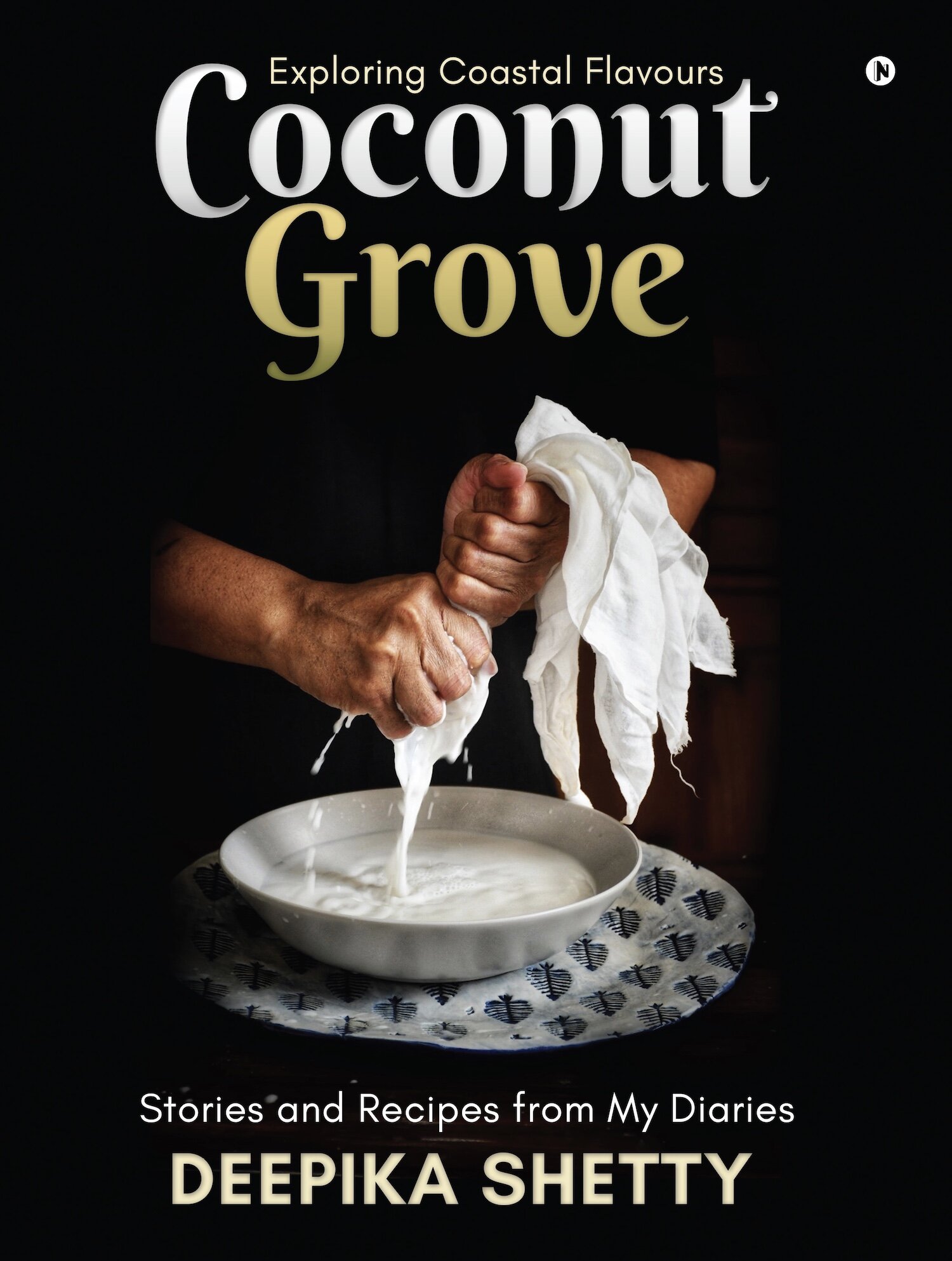Coconut Grove: The Essential Mangalorean Cookbook

Sharmila Vaidyanathan talks to author Deepika Shetty about her new book on Mangalorean cuisine, Coconut Grove. You can purchase the book HERE and use the code GOYA21 on checkout for a special discount.
A little more than a year ago, Deepika Shetty, also known as shortgirlbakes on Instagram, posted a video of herself, meticulously grating coconuts by hand. As she deftly moved the coconut over a serrated blade, the rhythmic hum of the process filled my ears with music. Thumbing through her new cookbook, Coconut Grove, I found myself returning to this video, re-watching it several times. It almost felt like the video was testimony to everything the book portrayed; authentic cooking, and local ingredients, wholesome food, and most importantly, finding poetry in simple culinary rituals.
Coconut Grove is Deepika's exploration into the kitchens and flavours of the coastal city of Mangaluru, and specifically her hometown of Kundapur. The glossy pages are love letters to the women who shaped her culinary practice, and to the sights and sounds of life there. Through the book, Deepika traces her roots back to the coconut groves where it all began. Born in Kundapur, Deepika then lived in Bombay, Bahrain, Bangalore before finally moving to Dubai, where she is now settled. "I think it is true when one says that distance makes the heart grow fonder. At one point, when people would ask me where I am from, I did not know how to respond. But no matter where we lived, the one constant in our lives was the food that my mother cooked. That was home," shares Deepika.
Coconut Grove begins with little details and tender anecdotes of the place, the people, and the ingredients that bolster the cuisine. Deepika writes about the pepper vines of Mangaluru; how every part of the jackfruit tree serves specific culinary purpose; about the fiery Byadgi chilli and, of course, the coconut palm. There are also stories from her childhood; the time she almost lost her way, following a peacock into the dense woods; about the large well near her grandmother's house, that kept growing despite the villagers efforts to contain it; and the special bond that families share with their livestock. Then, just as your mind begins to conjure images of the verdant land, and you can almost taste the salty sea breeze, Deepika ushers you into the kitchen to get cooking.
Recipes begin with the soul of regional cooking — the masalas, followed by chutneys, pickles, breakfast and snacks, curries and mains, sweets and then finally, with drinks. From a Heerekai Amte Bajji, or ridge gourd chutney with hog plum, a Pathrode or a vada of colocasia/taro leaves, to a handy Tomato Rasa or tomato curry, Deepika presents dishes of various levels of complexity, with simple and easy-to-follow instructions. Authenticity runs deep through the book, and her recipes bring out the inherent flavours of seasonal produce and the region’s ingredients. The Mavina Kai Bajji or green mango chutney is a medley of raw mango, onion, green chilli, coriander leaves and coconut, pounded to create a staggering marriage of flavourful ingredients. Coconut remains a leitmotif through the book. At one point, Deepika jokes about it with her mother, pointing out that one of her recipes does not use coconut. Her earnestly mother responds that the recipe would do well with the addition of a few pieces.
Coconut Grove is a land of nuance, but also of variety. Idli is not just idli here; there is jackfruit idli, turmeric leaf idli and methi idli. You could be whipping up dosas in a clay pan, or making buttermilk dosas, or the quintessential neer dosa. And we are talking about the coast, so mackerels, prawns, and ladyfish make significant appearances, as does the 'mother of all curries for us Bunts and Mangalurueans' — the Kundapur Chicken Curry. Through its pages, you can travel to Mangaluru vicariously multiple times a month.
As authentic as the narrative and the recipes are, so are the photographs. Splattered neer dosa, fiery red chicken curry, the various shades of amte kai or hog plum, the hands that fold the taro leaves, and the soft light of a wood fire — the images are beautiful and complement the words in every way, bringing the book to life. My favourite image from the book is one of Deepika's mother-in-law, seated in the storeroom of her house, surrounded by boxes and utensils. This candid image alone tells the story of Mangaluru kitchens.
When I ask Deepika about the photographs, she tells me that just as she collected recipes, she collected these images over time. "I am not a photographer by profession, and even now, I am learning. But through my trips home, I would always do everything with a camera in one hand. Most of the pictures were not planned. They eventually made it to the book. The one with my mother-in-law was taken right after she showed me the 'pathas' or storage boxes that we use for dry grains. We did plan to have a photoshoot for the book, but these photos organically fell into place," shares Deepika.
There is a lot to love about Coconut Grove, but what struck me the most was that it brought back the simple pleasure of reading a cookbook. Don't get me wrong, I love my IGTV videos on food and cooking, and in recent times, I have found myself gravitating to these quick videos every time I wanted a new recipe. But there is something about sitting back and reading through the written instructions and an author's inputs on a dish. Especially when you encounter lines like these — "I have a feeling that the addition of garam masala to this recipe is my mother's doing, but it adds that little additional spice and aroma, which you can't put a finger on, but is delicious." Or this, when Deepika writes about Chicken Ghee Roast — “Don't be fooled by its simple looks. The hero of this dish is the ground spice paste and takes its time to cook, and is very temperamental too. It senses your fear, and spits and splutters everywhere."
Coconut Grove is an attempt to show Mangaluruean cuisine beyond neer dosa and ghee roast. "I do think that the cuisine lacks representation. Even some of the most popular restaurants showcase only a few select dishes. Idlis, for example, are not just breakfast for us. They are also part of a meal. There are several vegetarian dishes that people don't seem to know of." The author ensures that there are enough answers in the book for all kinds of taste preferences and cravings beyond these popular names.
As a culinary professional, Deepika straddles two worlds. She can talk to you about an Apple Raisin Crumble Cake as easily as she can take you through the laborious steps of a Ragi Manni or a finger millet pudding. She will tell you where you can substitute portobello mushrooms as easily as she talks about the estuarine ladyfish and its distinct flavour. The fact that she manages to balance the professional and the lifelong student in her, while keeping the narrative of Coconut Grove so close to home, is what makes this book most memorable for me.
Sharmila Vaidyanathan writes about food entrepreneurship and sustainability on her website, The Yellow Turmeric.
Thank you to our friends at Coconut Grove for sponsoring this feature. If you’d like to buy the book, you can do so HERE. Remember to use the code GOYA21 on checkout for a specially discounted price for Goya readers!
ALSO ON THE GOYA JOURNAL














